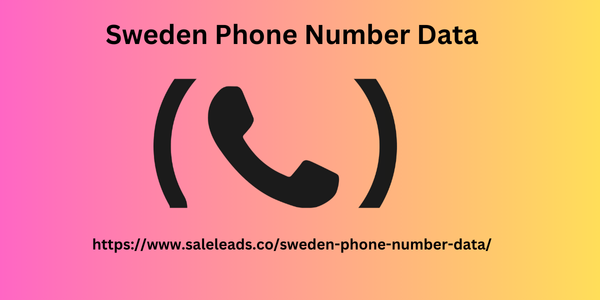|
|
Caller verification is an important aspect of telecommunications in Sweden, designed to enhance security and trust in phone communications. As fraud and scams over the phone have become increasingly sophisticated, mechanisms for verifying callers have evolved to protect both individuals and businesses.
Understanding Caller ID Technology
Essentially, the backbone of caller verification is Caller ID technology, which flashes the calling party's number on the device of the receiver. The system works well in Sweden; however, fraudsters mostly exploit this by resorting Sweden Phone Number Data to techniques such as caller ID spoofing, wherein the displayed number is manipulated to show up as some genuine entity. To solve this issue, verification other than that provided directly by Caller ID has been implemented by various telecommunications companies and their respective regulatory bodies.
Authentication Protocols
Authentication protocols are among the major mechanisms for caller verification in Sweden. The protocols require the authentication of the identity of callers by telecommunications providers before the call is completed. This can include the verification of the caller's number against a database of legitimate numbers. Numbers that do not match may flag calls or even block them, reducing the chances of fraudulent calls reaching consumers.
Number Portability and Registration
Number portability in Sweden enables subscribers to retain their numbers even when changing providers. This is convenient but complicates caller verification. To address this, the Swedish Post and Telecom Authority, or PTS, keeps a registry of number ownership and changes. This registry assists in the verification of the legitimacy of a caller and can be accessed by service providers for added security.

Consumer Awareness and Reporting
Improvement in caller verification also entails consumer awareness. Most of the telecommunication companies in Sweden have engaged in educational campaigns to educate the users on how to spot suspicious calls and verify any caller, especially if it involves personal information. They also encourage consumers to report fraudulent calls to help the authorities track down and put an end to phone scams.
Conclusion
In summary, caller verification in Sweden is a multi-faceted approach that includes technology, regulation, and consumer education. As the telecommunications landscape further evolves, continued efforts at improving caller verification will be needed to protect both individuals and businesses from fraud. By putting in place robust authentication protocols and fostering consumer awareness, Sweden aims to create a safer environment for phone communications.
|
|